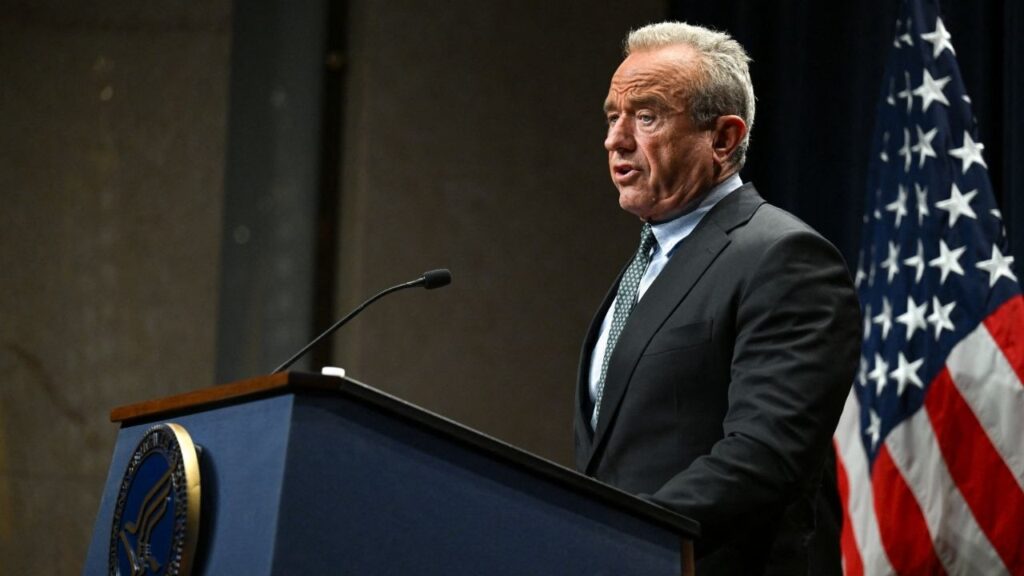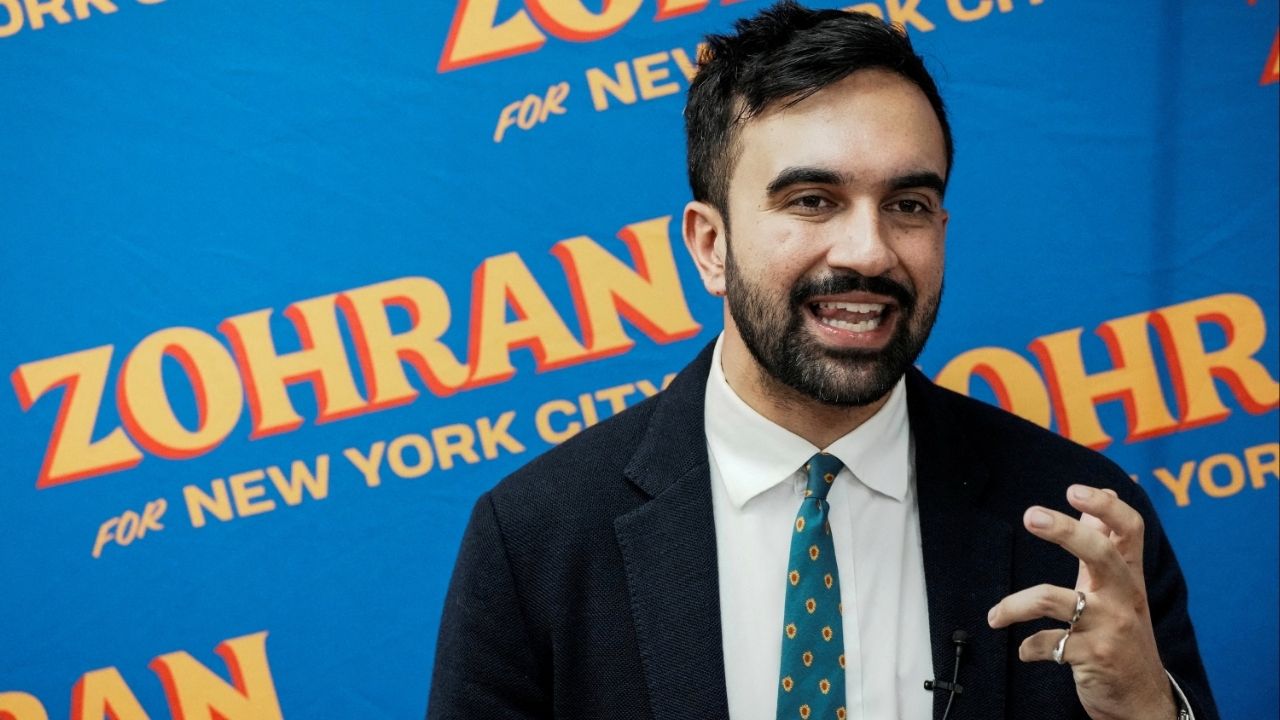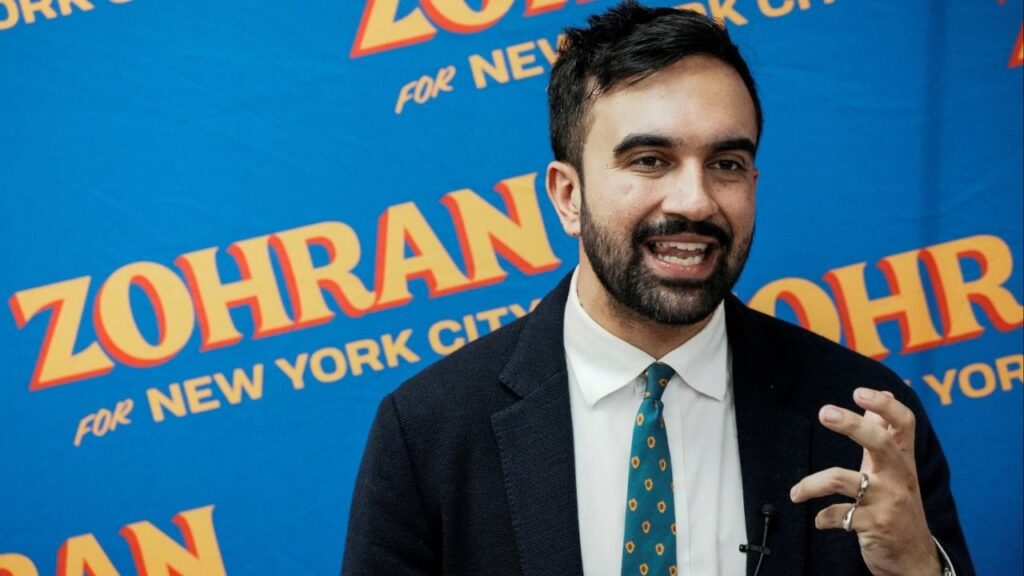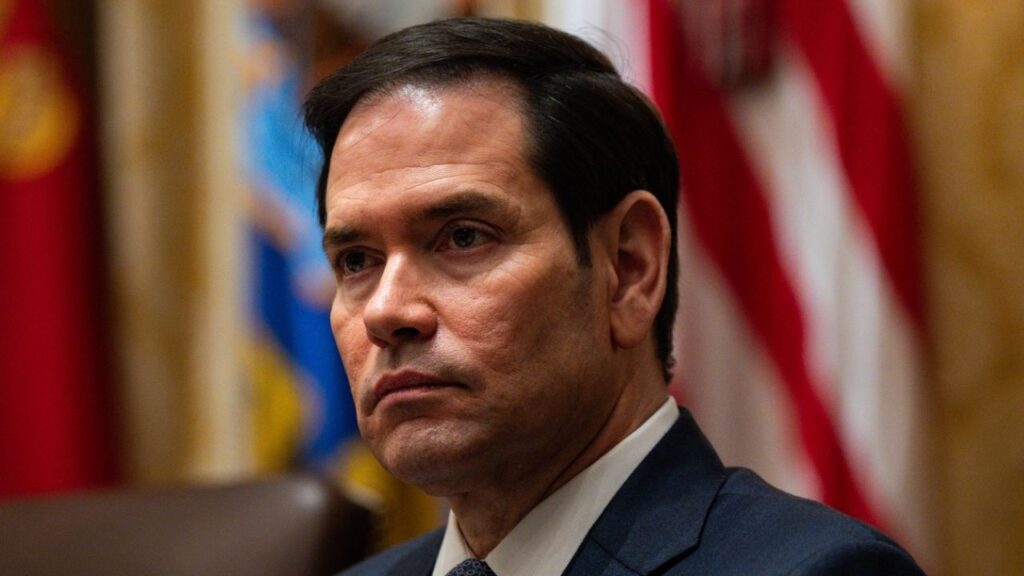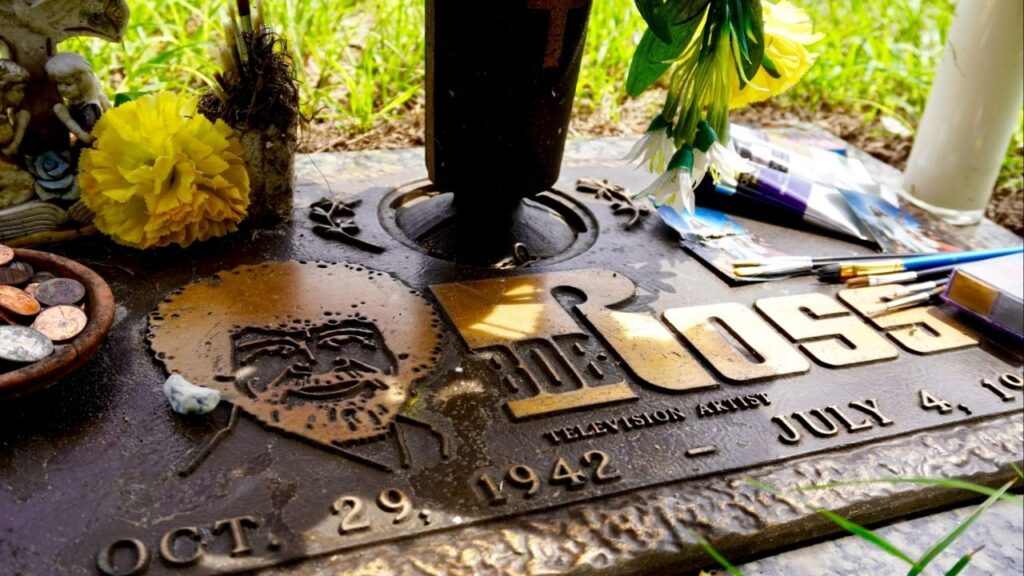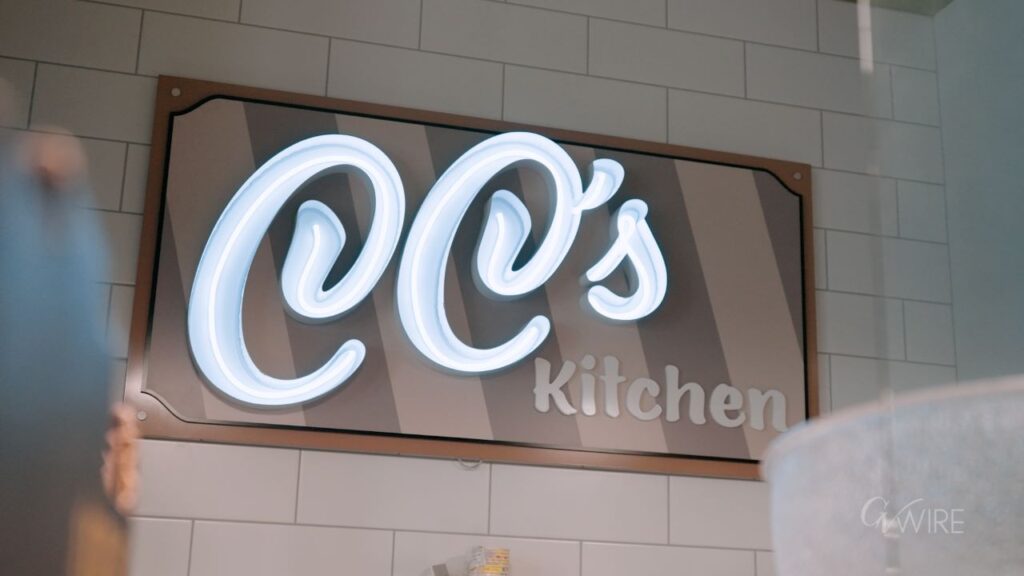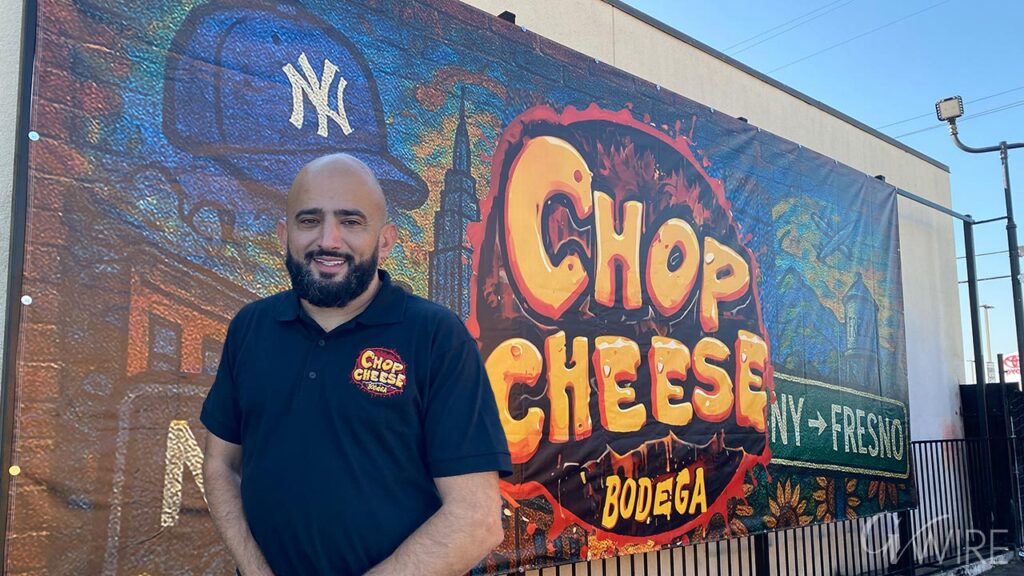New York City mayoral candidate Zohran Mamdani speaks during a campaign event in the Bronx borough of New York City, U.S., August 14, 2025. (Reuters File)

- Zohran Mamdani’s New York victory sparked a youth-driven “Mamdani movement,” mobilizing disaffected voters and signaling a left-wing revival.
- Analysts say Mamdani’s focus on affordability and mobilizing new voters offers Democrats a model to repair their brand.
- Critics warn the movement could falter like past leftist surges if Mamdani struggles to govern or replicate national success.
Share
|
Getting your Trinity Audio player ready...
|
KEY ELEMENTS OF THE MAYOR-ELECT’S CAMPAIGN HAVE ENORMOUS POTENTIAL FOR A PARTY THAT WAS BADLY BEATEN IN 2024.
It’s only been a week, but the election of Zohran Mamdani as mayor of New York last Tuesday raises key questions for those seeking to put the Democratic Party on a winning path.
Did his victory reveal the potential of a movement driven by legions of young, disaffected voters — especially struggling college graduates who are part of the so-called precariat — determined to wrest power from the party’s old-guard establishment and push the party’s platform to the left?
Or will the Mamdani movement deteriorate and fall into the long tradition on the left of flames that all too quickly burn out, another in the list of protest movements that includes Occupy Wall Street, the pink pussy hat resistance and even Black Lives Matter?
Let me say at the outset that I don’t claim to have the answer. I am instinctively pessimistic, based on covering the struggles of liberalism and the left for more than a half-century. That puts me on the side of doubters.
At the same time, however, key elements of Mamdani’s campaign have enormous potential for a party badly beaten in 2024, one that continues to be held in disdain by much of the electorate, including by many of its own members.
To an unusual degree, researching and writing this column has changed my thinking, leaving me more impressed with what Mamdani achieved and with the possibilities he has raised for the Democratic Party.
There is no question that Mamdani demonstrated an extraordinary, if not magical, ability to change the character and composition of the electorate in the nation’s largest city.
The turnout rate of voters age 18 to 29 rose to 41.3 percent this year from 11.1 percent in the 2021 election for mayor. The share of total turnout composed of 18-to-29-year-olds grew to 16.6 percent from 8.9 percent four years ago
Turnout rose for all groups, but much more among young voters than among voters over 50.
I am not going to try to address two related but unknowable questions — whether a Mamdani administration will succeed and whether Mamdani himself is a potential candidate for higher office. Instead, my focus is specifically on the broader applicability of the Mamdani campaign strategy for the national Democratic Party.
Mamdani built an insurgency within the Democratic Party primary electorate first by mobilizing traditionally quiescent young voters — many of whom have found that their B.A.s do not guarantee a good job or any job at all — and then drawing in nonwhite voters and more of the college-educated middle class.
Democrats have been trying to win for two decades with what came to be known as an upstairs-downstairs coalition of largely white college-educated voters and nonwhite voters of all educational backgrounds.
The Mamdani movement added two crucial ingredients: anger and moral purpose — and in so doing actually expanded the electorate itself.
In sharp contrast, say, to the campaigns of Hillary Clinton, Joe Biden and Kamala Harris, the Mamdani campaign was, in effect, an intraparty insurrection seeking to displace what its backers see as a dysfunctional and failed old guard. It is this semi-revolutionary element that gave the Mamdani campaign its larger moral legitimacy: the reform of a moribund institution.
By achieving this, Mamdani’s admirers argued, he demonstrated the potential for initiating similar intraparty insurrections elsewhere in the country, campaigns seeking to convert internal discontent from a disadvantage into a tool to awaken and mobilize the electorate:
“Simply put, the Democratic Party is primed for a hostile takeover.” Ryan Enos, a political scientist at Harvard, argued in a Substack post right after the election, “Mamdani and the Future of the Democratic Party.”
Mamdani has tapped into a new political marketplace for enterprising candidates, Enos contended:
As talented as Mamdani may be, there are many more people out there with similar talents and who are, like Mamdani, outsiders to the party establishment or will be willing to run as outsiders if this is the path to electoral success.
Given the national mood and the fact that virtually nobody really likes the Democratic Party, we can anticipate that these politicians will emerge as contenders for various levels of office, perhaps even as the next Democratic presidential nominee. And many, as with Mamdani, will likely be able to overcome establishment forces and gain power.
Mamdani’s significance, Enos argued,
lies more in the fact that there was enough enthusiasm for change rooted in dissatisfaction with the status quo and anger at those who perpetuate it, that voters in a major election were willing to elect a true outsider candidate and to work hard enough to do so in the face of enormous establishment resistance.
l
From an entirely different perspective, Steve Bannon, who oversaw Donald Trump’s 2016 campaign and remains one of the most powerful voices on the right, sees great potential in the Mamdani campaign.
Bannon warned his fellow conservatives, including the president, that they risk self-delusion if they dismiss the significance of Mamdani’s victory. In an interview last Wednesday with Politico, Bannon declared:
People better understand they have a fight on their hands. This guy is a serious guy. … The national Republican Party and some of the smartest strategists do not realize the power of the Working Families Party and the [Democratic Socialists of America] for ground game. Modern politics now is about engaging low-propensity voters, and they clearly turned them out tonight, and this is kind of the Trump model. This is very serious.
Bannon shares Enos’s view that Mamdani has opened a political window for the left: “You’re going to see a whole new group of Mamdanis in these major urban cities. This is the flower of what the progressive left has delivered over the last 40 or 50 years.”
John Mollenkopf, director of CUNY’s Center for Urban Research, has studied the demographics, neighborhood dynamics, immigration patterns and politics of New York for more than four decades.
He has been impressed by the Mamdani campaign. In a phone interview, Mollenkopf described the mayor-elect as “an exceptionally talented communicator and campaigner, very thoughtful, very smart, very anticipatory about the kinds of criticisms he’s going to get.”
Mamdani was deluged with hostile questions throughout the campaign, Mollenkopf pointed out, and “one sign of how talented he is is that he doesn’t react with his gut. He reacts with his brain.”
Contrary to critics who argued that Mamdani is too far left, Mollenkopf argued that Mamdani
did exactly what the centrist critics of the woke Democratic Party said he should do. He constantly stressed kitchen-table issues, affordability, cost of living. He focused on that relentlessly.
He didn’t say, “I’m bringing socialism to New York.” He didn’t say, you know, “We’re going to seize the means of production.” He said, “We’re going to make your buses free and fast. We’re going to freeze your rent.”
In other words, “He followed the conservative advice about how Democrats could win.”
Mollenkopf argued that as mayor one of Mamdani’s key challenges will be managing and containing the more radical wing of the Democratic Socialists of America, “who think that the election is the road to revolution. Mamdani is going to have to confront those people sooner or later.”
The get-out-the-vote drive led by D.S.A. organizers was a key factor in Mamdani’s victory, in Mollenkopf’s view:
They got somewhere between 70 and 110,000 people out in canvassing efforts, both for the primary and for the general election. I’ve never seen anything like it in New York, including the Obama campaigns.
There is a more ambivalent view of the Mamdani campaign.
Zachary Donnini, a graduate student in data science at Harvard and a data adviser to the Yale Youth Poll, captured this equivocality in his prescient June 27 Substack posting, “How Zohran Mamdani Could Deliver the Left’s Most Important Win in Years.”
The general election “is definitely set to be the left’s biggest win since AOC defeated Joe Crowley, and potentially even bigger,” Donnini wrote,
but let me play devil’s advocate and throw some cold water on the excitement. It’s nothing new for the left to prove they can win Democratic municipal primaries in the most lefty cities in the country. Sure, this was against a massive disadvantage in name recognition and fund-raising, and N.Y.C. is a much bigger fish to fry that gets far more national media attention.
But Brandon Johnson won in Chicago just two years ago and now sits at a 6 percent approval rating as mayor. Progressive D.A. George Gascón won in Los Angeles in 2020, only to get absolutely demolished by an independent in 2024, running a staggering 53 points behind fellow Democrat Kamala Harris in the same county. …
This is shaping up to be the left’s biggest electoral win in forever, but it could all be for nothing (and potentially really damaging to the gaining momentum of the movement) if Mamdani can’t break the recent pattern of his progressive predecessors having spectacularly unsuccessful tenures actually governing.
In an Email, Donnini Elaborated:
It’s worth remembering that New York City is demographically exceptional. Mamdani’s strongest areas (Lower Manhattan, Brooklyn and western Queens) represent a concentration of young, progressive voters found in only a handful of places nationwide, like Chicago’s North Side.
While his appeal won’t translate everywhere, certain elements are replicable: his social media savvy and focus on affordability clearly resonate with a segment of the electorate. The challenge for Democrats is harnessing that enthusiasm without alienating swing voters in the process.
There are, of course, a substantial number of Democrats who view the Mamdani campaign as a political and ideological dead end that will collapse in failure, providing ammunition to Trump and his allies on the right.
In an email, Paul Begala, a Democratic strategist who played a key role guiding the 1992 presidential campaign of Bill Clinton to victory, made a detailed case that the moderate strategies adopted by Abigail Spanberger and Mikie Sherrill, governors-elect of Virginia and New Jersey, offer a far better model for Democratic candidates than Mamdani’s approach:
We have empirical data after Tuesday. A real-life test case in which Spanberger, a centrist Democrat, flipped a G.O.P.-held governorship in a purple state with a centrist, persuasion-based strategy; while a socialist with a mobilization strategy limped across the finish line, an astonishing 18 points behind Kamala Harris.
Begala argued that the very fact that “Mamdani ran on cost of living and did not focus on the woke white left’s agenda of identity, guilt and grievance” demonstrated the continuing strength of a centrist, pragmatic approach. “If a democratic socialist refuses to run on the far left’s social and cultural elitism, you can be sure it’s dead.”
Begala did acknowledge the success of the Mamdani’s overarching strategic guideline:
Keep it simple, stupid. Free buses. Freeze rent. Free child care. City-owned grocery stores. Tax the rich. Regardless of how you feel about these ideas, each one would fit on a hat.
Contrast those slogans with how Kamala Harris
her housing policy at an August rally in North Carolina: “As president, I will work in partnership with industry to build the housing we need, both to rent and to buy. We will take down barriers and cut red tape including at the state and local levels. And by the end of my first term, we will end America’s housing shortage by building three million new homes and rentals that are affordable for the middle class. And we’ll do that together.”
All that said, Begala continued,
Let me get to the heart of your question: Zohran Mamdani had the weakest win of a successful New York Democrat in 35 years. Fifty-point-four percent is weak. Eric Adams got 67 percent. Bill DeBlasio got 73 percent his first election and 66 percent in his second.
Contrast that weakness with Abigail Spanberger and Mikie Sherrill’s strength. Each outpaced Harris by 4 to 5 percent. It seems to me the question is, why were Spanberger and Sherrill so much stronger than Mamdani — while running in much more challenging terrain than he?
While some of Begala’s points are well taken, he misses a strength of Mamdani’s that sets him apart from his fellow Democratic victors on Election Day: He mobilized disgruntled and angry young voters, who have long been seen as the potential to be the party’s sleeping giant.
In New Jersey, voters 18 to 44 made up 31 percent of the electorate. In Virginia, it was 33 percent. In New York City, it was 40 percent, according to CNN exit polls. Differences of seven or nine percentage points in the composition of the Democratic electorate may seem modest. In practice, they are seismic, with the potential to revitalize an almost lifeless political party.
G. Elliott Morris, a political analyst who publishes his work on Substack at Strength in Numbers, described this aspect of Mamdani’s victory in an essay on Sunday, “The Mamdani Youthquake Suggests a Way for Democrats to Repair Their Brand.”
Examining the election results, Morris wrote, “one chart that really caught my eye,” which showed “the percent of voters participating in New York City’s mayoral election that were less than 45 years old.”
Of the two million voters who cast ballots in person, he continued,
42 percent were under age 45 — a much higher share than in recent mayoral races. In 2021, just 27 percent of those who voted for New York City mayor were under 45.
First-time voters also made up an abnormally high 20 percent of the electorate on Tuesday. These new voters broke for Democratic Party and democratic socialist candidate Zohran Mamdani over former governor Andrew Cuomo by a margin of 66 to 30. This group was as pro-Mamdani as young voters, who broke 70 to 25 in his favor.
Crucially, Morris wrote, “Mamdani also won two-thirds of voters with an unfavorable view of both political parties. This is something that Donald Trump managed to do in 2016, 2020 and 2024, as well.”
Maybe, Morris concluded, “the party can learn something from Mamdani’s success in turning out new voters and engaging anti-system voters with an agenda aimed at affordability and the American dream. That is, after all, what most voters say they want out of politics anyway.”
—
This article originally appeared in The New York Times.
By Thomas B. Edsall/Damon Winter
c. 2025 The New York Times Company
RELATED TOPICS:
Categories
Ken Parker, Who Sought to Reinvent the Guitar, Dies at 73
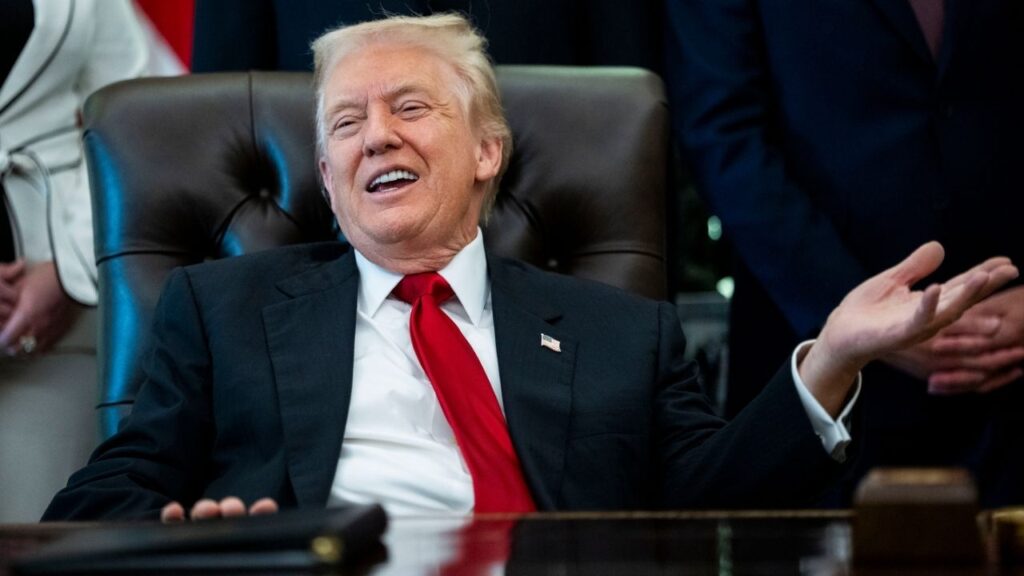
What if Democrats’ Big Shutdown Loss Turns Out to Be a Win?
